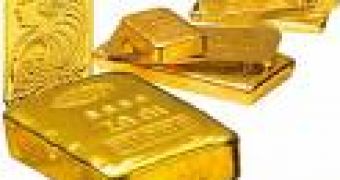Gold has been considered a precious metal since the dawn of mankind. It has also been the backbone of entire civilizations, object of fascination to the extreme, and so called justification for individual and mass murders.
Recently, its value increased, and not because it has become more scarce, but due to new uses of its natural properties.
Dean Toste, a University of California, Berkeley, associate professor of chemistry, was one of the first chemists to experiment with gold as a catalyst, opening the door for others interested in gold's versatility and in the potential to generate chemicals of interest for the chemical and pharmaceutical industry more efficiently and using less toxic precursors.
He has found an impressive number of new and unique gold-catalyzed reactions by applying Einstein's theory of relativity to the rare and precious metal.
Now he proposes a new theory for why gold has such unusual, and practical, catalytic properties. So far, the hypothesis has successfully predicted the behavior of gold catalysts in new chemical reactions.
At the heart of his hypothesis is the special theory of relativity, proposed by Albert Einstein 102 years ago and typically thought of as applying only to cosmological questions. But late UC Berkeley chemist Kenneth Pitzer showed some 70 years ago that the theory comes into play in chemistry as well. Other researchers have used so-called relativistic quantum mechanics to explain gold's yellow color and why mercury is a liquid instead of a solid.
Toste now takes this explanation a step further, crediting special relativity with making gold - and perhaps the related and widely used catalyst platinum - act as both an acceptor and a donor of electrons in a catalytic reaction. Typical metal catalysts do one or the other, but not both.
The main issue of relativity is that nothing can travel faster than the speed of light, because objects become heavier, or more massive, the faster they go, with the mass approaching infinity as the object approaches the speed of light.
In a gold atom, with 79 protons in the nucleus, the 79 electrons whip around the nucleus at about half the speed of light, so the net effect is that gold's electrons are much heavier and are pulled in closer to the nucleus, lowering the energy levels and making the atom more compact and allowing gold to absorb blue light and, thus, look yellow.
Silver, because it exhibits a much less dramatic relativistic effect, is unable to absorb any visible light and is totally reflective.
Toste proposes that this same shielding effect allows gold to be both a donor and an acceptor of electrons.
For example, a gold atom attached to the chemical phosphine and dispersed homogeneously in a liquid can efficiently convert alkynes to pyrroles, which are ring structures found in many drugs.

 14 DAY TRIAL //
14 DAY TRIAL //